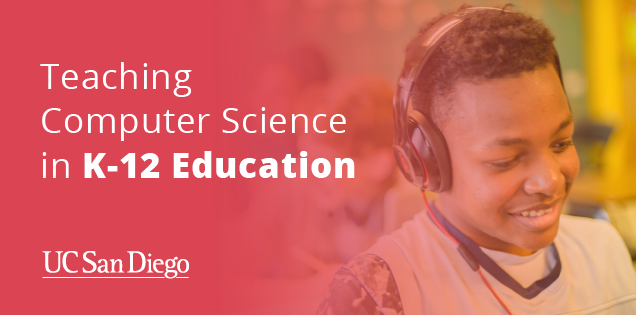Coursera Blog
Active Member

According to a recent Gallup & Google Trends in The State of Computer Science Report, 60% of schools in the U.S. do not have a single computer science course. Dr. Beth Simon, Teaching Professor in the Department of Education Studies at UC San Diego, wants to make sure teachers in every school have the necessary skills to address this challenge. Using her unique combination of computer science knowledge and k-12 pedagogy, Dr. Simon is creating a series of online courses to empower teachers to teach CS, starting with the new Teaching Impacts of Technology in K-12 Education Specialization. If you’re looking to teach digital literacy and create enthusiasm for Computer Science education read on to see how this Specialization can help.
Why did you choose to create this Specialization?
In the last 8 to 10 years there’s been a global movement to recognize that understanding how technology and computers work is critical to every person’s understanding of the world. It enables informed citizens as well as the discovery of future breakthroughs.
Adding computing as a discipline needs to become a required part of the K-12 experience but it won’t be easy. Injecting this “new” discipline is a challenging task which will involve not only preparing new teachers to teach this topic but also to find a massive way to train and prepare them. The goal is to reach every teacher in primary school and specific sets of teachers within high schools.
In short, there is a massive need for this training and whenever I think of massive problems I think of massive open online courses and Coursera as a solution.
What are the most exciting aspects of this Specialization?
- It’s graduate level work and is aligned with CS teaching standards and credentialing requirements (in California). This content was initially created and piloted as UCSD graduate courses.
- It’s highly applied with cool and easy to understand visualizations and relevant examples of core computing concepts. It’s not boring material from a textbook. We use tools and exercises that teachers can actually do with their students. Every course has an additional section on pedagogy so not only are the concepts explained but we show teachers how to apply them directly with sample lesson plans.
- It’s made to be engaging for a wide audience. We use a problem-based approach, and we take very real problems that everyone encounters. We look at the social issues and delve into the core computing concepts underneath to answer “how does that work?”
Who is the ideal learner for this course? Why?
A current or aspiring K-12 teacher interested in bringing CS into his/her classroom but without the time, money, or access to weeks of in-person professional development where they live, any teacher looking to advance professionally. For some, the Specialization certificate will be enough. If a teacher needs credit because teacher licensure and rules vary state by state, they can apply for credit for these courses through UC San Diego.
Additionally, a school leader can decide to use this to engage a group of teachers without finding an outside expert to run PD.
What’s next?
I am looking for help in scaling the impact and reach of this program. I’m especially excited to connect with people from the department of education, and universities who are looking to offer either fully online or hybrid classes. I have a website, so please reach out!
Enroll in Teaching Impacts of Technology in K-12 Education Specialization today.
The post Increasing Access to Computer Science Education for K-12 appeared first on Coursera Blog.
Continue reading...
